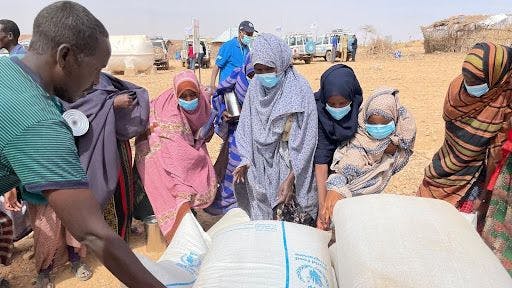The Horn of Africa is experiencing one of its worst droughts caused by the driest weather in the region in recent history with 12-14 million people severely food insecure in Ethiopia, Kenya, and Somalia, according to the United Nations Office for the Coordination of Humanitarian Affairs (OCHA).
In Ethiopia, the drought is affecting an estimated 6.8 million people. It is feared that if the fourth rainy season also fails this March and April, the crisis will reach even greater levels.
The food shortage causes many children to become stunted. According to the agency, about 5.5 million children are expected to be acutely malnourished in these three countries in 2022, including more than 1.6 million severely acutely malnourished, due to the drought.
“Food prices are rising in many drought-affected areas, due to a combination of macro-economic challenges, below-average harvests and rising prices on international markets, leaving families unable to afford even basic items”
Families in the affected areas are taking desperate measures to survive, with thousands leaving their homes in search of food, water, and pasture, increasing the risk of inter-communal conflict, as well as heightening pressure on already limited basic services.
Struggling to cope with the cumulative consequences of other shocks, including conflict, flooding, COVID-19, and desert locusts, many drought-affected communities are said to be faced with parallel challenges, at the same time.
Across the Horn of Africa, millions of people are facing dire water shortages. Many water points have dried up or diminished in quality, heightening the risk of water-borne diseases and increasing the risk of skin and eye infections.
The drought is becoming one of the worst climate-induced emergencies seen in the Horn of Africa, according to the report.
With global models showing mixed signals and high levels of uncertainty for most of the region, the agency says it is notoriously difficult to forecast upcoming months of the rainy season from March to May.
Humanitarian partners have appealed for more than US$4.4 billion to provide life-saving assistance and protection to about 29.1 million people in Ethiopia, Kenya, and Somalia in 2022.
“We urgently call on donors to fund these appeals so that we can immediately respond to the life-threatening needs across the Horn of Africa,” OCHA said.
Addis Zeybe






























